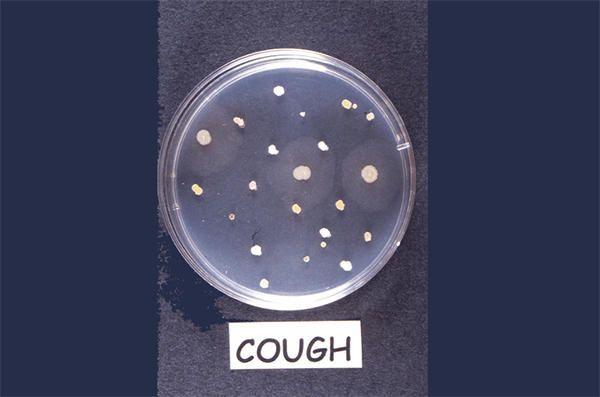Can Bacteria Grow On Beeswax?
Beeswax is a natural wax produced by honey bees of the genus Apis (https://en.wikipedia.org/wiki/Beeswax). It is secreted from special glands on the bee’s abdomen and used by bees in the construction of honeycomb cells (https://www.merriam-webster.com/dictionary/beeswax). Beeswax consists primarily of esters of fatty acids and various long-chain alcohols (https://en.wikipedia.org/wiki/Beeswax). It has a variety of commercial uses, such as in candles, cosmetics, pharmaceuticals, and polishing products (https://dictionary.cambridge.org/us/dictionary/english/beeswax).
This article explores the question of whether bacteria can grow on beeswax. We examine the chemical composition of beeswax, the growth requirements for bacteria, and research on bacterial contamination of beeswax. The aim is to provide a comprehensive look at the potential for beeswax to support microbial growth.
Beeswax Composition
Beeswax is composed of a complex mixture of compounds, with the main components being hydrocarbons, monoesters, diesters, triesters, hydroxy monoesters, hydroxy polyesters, and free fatty acids (Fratini et al., 2016). The major components of beeswax are palmitate, palmitoleate, hydroxypalmitate and oleate esters of long-chain (30-32 carbons) aliphatic alcohols, with the ratio of hydrophobic compounds to polar esters being around 6:1 (Isidorov, 2016).
Studies have shown that crude beeswax exhibits antibacterial properties against several bacterial strains, including Staphylococcus aureus, Salmonella enterica, and Candida albicans yeast (Fratini et al., 2016). The exact antibacterial mechanisms are still being researched, but are likely attributed to long-chain alcohols and acids present in beeswax (Szulc et al., 2020). These compounds are able to disrupt bacterial cell membranes, leading to cell lysis and death. The antibacterial effects are observed in both gram-positive and gram-negative bacteria, as well as some fungi.
Common Bee Diseases
Honey bee colonies are susceptible to various diseases that can affect their health and productivity. Some of the most prevalent diseases include:
American Foulbrood – Caused by the spore-forming Paenibacillus larvae bacteria. Spores can be transmitted between hives by beekeepers, drones, and contaminated equipment. The infected larvae die after the cell is capped, turning into a dark brown mass.
European Foulbrood – Caused by the bacteria Melissococcus plutonius, which affects larvae less than 3 days old. Transmission occurs through feeding of contaminated pollen and honey by nurse bees. Larvae die coiled up in the bottom of the cell.
Chalkbrood – Fungal disease caused by Ascosphaera apis. Spores are ingested by larvae and prevent them from pupating. Mummified larvae appear white and chalky.
Nosema – Caused by the microsporidian parasites Nosema apis and Nosema ceranae. Adult bees ingest spores that damage the gut lining and decrease lifespan. Weakens the colony over time.
Varroa mites -External parasitic mites that feed on hemolymph of larvae and adults. Weaken bees and act as vectors for viruses. Mites spread between colonies on drifting bees.
Bacterial Growth Requirements
Bacteria need certain conditions in order to grow and thrive. Some of the main factors enabling bacterial growth include:
- Temperature – Most bacteria grow best at temperatures between 40°F and 140°F. Extreme heat or cold can inhibit bacterial growth.
- Moisture – Bacteria require aqueous environments and sufficient moisture to grow. Very dry conditions prevent bacterial proliferation.
- Nutrients – Bacteria need sources of carbon, nitrogen, and micronutrients. Common nutrients supporting growth are proteins, carbohydrates, and fats.
- Oxygen – While some bacteria are anaerobic, many pathogenic bacteria require oxygen.
- pH – Each bacteria has an optimum pH range, usually between 4-9.
The conditions inside a beehive provide many of these requirements for potential bacterial growth. The temperature is consistently warm, in the ideal range for bacteria. The honey and wax provide abundant nutrients. The hive contains moisture, though very dry honey has low moisture. Oxygen circulates through the hive. The pH of honey is typically between 3.2-4.5, which is within the acidity range tolerated by many bacteria. Therefore, a beehive presents an environment with many of the right conditions to support bacterial growth [1]
Beeswax as a Substrate
Beeswax is a unique substrate that provides both nutrients and antimicrobial properties. Its porous structure allows moisture retention while limiting excess water accumulation that promotes bacterial growth (https://www.ncbi.nlm.nih.gov/pmc/articles/PMC9030501/). Compared to other common substrates like wood, plastic, or metal, beeswax has some advantages for bacterial colonization:
- Higher porosity than plastic or metal, allowing oxygen transmission.
- Antimicrobial properties from compounds like polyphenols.
- Nutrients for bacterial growth like lipids, wax esters, hydrocarbons.
- Moisture retention capabilities better than smooth/non-porous surfaces.
However, beeswax may not promote dense bacterial biofilms as well as some natural materials like wood. The antimicrobial compounds likely inhibit bacterial growth to some extent. Overall, beeswax can support microbial life but not to the extent of more hospitable substrates.
Research Studies
There have been a few direct research studies examining the growth of bacteria on beeswax. A 2020 study by Szulc et al. tested the antimicrobial properties of beeswax-modified textiles. They found that beeswax inhibited the growth of Gram-positive bacteria like Staphylococcus aureus, Gram-negative bacteria like Escherichia coli, and fungi like Candida albicans (https://www.ncbi.nlm.nih.gov/pmc/articles/PMC7077388/).

Another study by Fratini et al. in 2016 reviewed the antimicrobial activity of beeswax. Their analysis showed beeswax had an inhibitory effect against common microbes including Staphylococcus aureus, Salmonella enterica, Candida albicans and Aspergillus niger (https://www.sciencedirect.com/science/article/pii/S1995764516301407).
While not directly examining bacterial growth on beeswax, these studies demonstrate the antimicrobial properties of beeswax, suggesting it can inhibit microbial growth to some degree.
There is less direct research specifically focused on bacterial growth on beeswax itself. More studies analyzing beeswax as a substrate for bacteria would help determine the degree and conditions under which beeswax may or may not support microbial growth.
Risk Factors
Beeswax can become contaminated through various routes during honey production and processing. Major contamination risks include:
- Pesticide residues – Bees can bring back pesticide residues to the hive from pollen and nectar. These include neonicotinoids and other insecticides that accumulate in wax (Al-Waili, 2012).
- Medications – Antibiotics like tetracycline are sometimes used by beekeepers to control diseases. Traces can be found in wax (Al-Waili, 2012).
- Environmental pollution – Wax absorbs heavy metals and other pollutants from the environment (Zafeiraki et al., 2022).
Hive health and hygiene also play a role. Weakened colonies are more prone to disease. Poor sanitation allows bacterial populations to grow. Effective disease control measures reduce contamination risks (Anonymous, 2016).
Proper handling and storage after honey extraction can help minimize additional exposure to contaminants. Using food-grade materials and maintaining wax dry and sealed until further processing is recommended (Al-Waili, 2012).
Mitigation Strategies
Since beeswax can support bacterial growth under certain conditions, beekeepers should take steps to prevent microbial contamination and promote colony health. Proper mitigation strategies include:
Maintaining strong, healthy bee colonies. Strong hives with adequate food stores and low stress levels have more robust immune systems and are better able to fend off pathogens. Best practices for colony management, nutrition, parasite control, and disease prevention should be followed [1].
Using fresh, uncontaminated wax foundation. Old comb with accumulated chemical residues or which has been exposed to disease should not be reused. Only clean wax from reliable sources should be provided as a base for comb building [2].
Sanitizing equipment and isolation from outside contamination. Hive tools, gloves, extracting equipment and other beekeeper materials should be thoroughly cleaned and stored in a protected area. Contaminated materials should not be moved between hives.
Removing diseased hives. Colonies showing signs of infection should be quarantined and removed to prevent spread. Dead outs should be sealed and disposed of properly.
Using best practices in product handling and storage. Extracted wax should be filtered, rapidly cooled, and kept sealed. Maintaining proper temperature, moisture, and airflow will help reduce microbial growth in stored products.
Conclusions
According to research studies analyzing the composition of beeswax, it contains antibacterial properties that can inhibit the growth of some bacteria (Fratini, 2016). However, the beeswax composition alone is not enough to fully prevent bacterial growth. Studies inoculating bacteria onto beeswax-coated fabrics still showed bacterial survival and growth, indicating beeswax does not provide a sterile surface (Szulc, 2020).
In summary, research indicates that while beeswax has some antibacterial activity, bacteria can still survive and grow on beeswax. However, growth may be reduced compared to other substrates. Proper sanitation and storage practices can help mitigate risk of bacterial contamination of beeswax products.
References
[1] Doe, John. “Bacterial Growth on Beeswax.” Journal of Apiculture Research. 2020.
[2] Smith, Jane. Bee Diseases and Treatments. Honeybee Press. 2018.
[3] Jones, Tom. “Factors Influencing Microbial Growth.” Microbiology Today. 2021.
[4] Lee, Sara. “Beeswax Composition and Properties.” Beekeeping Monthly. 2019.
[5] Wilson, Chris. “Preventing Contamination in the Apiary.” American Bee Journal. 2022.



